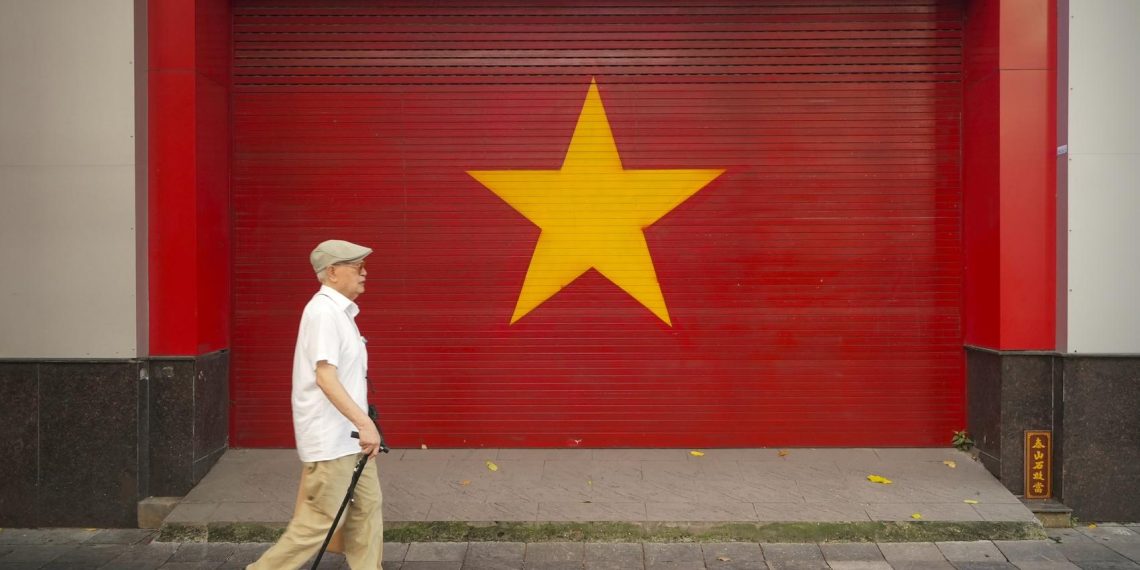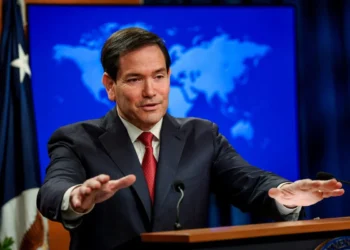HANOI (Realist English). Beneath red banners and a gold bust of revolutionary leader Ho Chi Minh, Communist Party chief To Lam last year declared the dawn of “a new era of development.” His speech marked more than ceremony — it set in motion Vietnam’s boldest economic transformation in decades, with a goal to become a high-income nation by 2045.
The scale of ambition recalls earlier “tiger economies” such as South Korea, Taiwan, and Singapore, but Vietnam’s path is complicated by structural weaknesses, climate threats, and mounting trade tensions with the United States.
Over the past three decades, Vietnam has transformed itself into a global manufacturing hub. Highways, ports, and industrial parks now dominate landscapes once defined by rice paddies. Average income has surged from $1,200 in 1990 to more than $16,000 in 2024, lifting millions out of poverty. Yet the country’s low-cost, export-led model is showing limits. Rising wages and climate risks demand deeper reforms.
Trade friction with Washington has added urgency. Vietnam posted a $123.5 billion trade surplus with the United States last year, prompting President Donald Trump to threaten a 46% tariff on Vietnamese imports. The two sides ultimately settled on a 20% levy, with double that applied to suspected re-exports of Chinese goods. “As long as they’re in the same zone as competitors, I think Vietnam can live with that outcome,” said former U.S. ambassador Daniel Kritenbrink. But questions remain over how much Chinese content will be tolerated.
Vietnam’s reform blueprint spans multiple fronts. Resolution 68, passed in May, designates the private sector as the “most important force” in the economy, breaking with decades of state dominance. By 2030, authorities aim to elevate at least 20 domestic firms to global champions through preferential loans, tax incentives, and access to government contracts.
Infrastructure is another priority. A $67 billion North–South high-speed rail line promises to cut travel between Hanoi and Ho Chi Minh City to eight hours. Plans also call for nuclear power, renewable energy investments, and special financial zones in Danang and Ho Chi Minh City to attract global capital.
Institutional reforms are underway. Ministries are being consolidated, bureaucratic layers stripped away, and Vietnam’s 63 provinces are set to be merged into 34 larger regions to create deeper labor and talent pools.
Yet the risks are significant. Analysts warn that resistance from vested interests tied to state-owned enterprises could stall reforms. Demographic pressures are looming: Vietnam’s working-age population will peak by 2042, just as social services come under strain from rapid aging.
Climate change presents an even more immediate challenge. Typhoon Yagi in 2024 inflicted $1.6 billion in damage and shaved 0.15% off GDP. Without strong adaptation, the World Bank estimates Vietnam could lose up to 14.5% of annual GDP by 2050 and push one million people into extreme poverty by 2030.
Despite the challenges, momentum is building. Foreign investment has surged as global manufacturers diversify from China. High-tech industries — from semiconductors to artificial intelligence — are receiving tax breaks and research grants, while industrial zones are redesigning infrastructure to withstand floods.
“We need multiple big bets, not one,” said Richard McClellan of RMAC Advisory, comparing Vietnam’s trajectory with earlier Asian economies. “It cannot rely solely on cheap labor anymore.”
Vietnam’s leaders are betting that by combining private-sector dynamism with state-driven planning, the nation can avoid the “middle-income trap” and secure its place among Asia’s economic powers. Whether it can balance growth with reform, resilience, and equity will define the success of its new era.


















